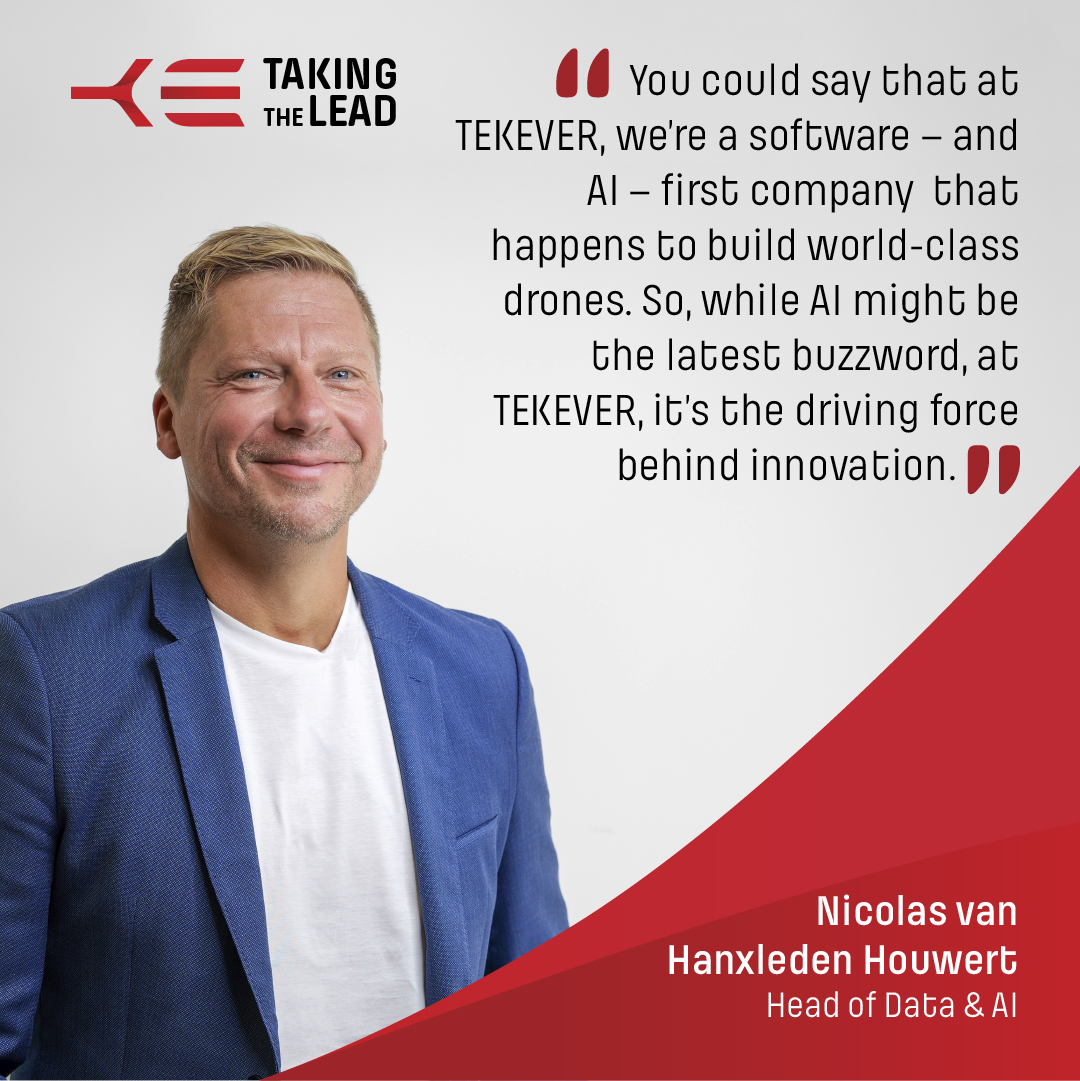With a background in Computer Science and Artificial Intelligence, and over 25 years of industry experience, I’ve seen AI evolve from an obscure academic field to a buzzword that’s often misunderstood. But here’s the real story: AI is far more than ML. It’s a collection of powerful tools, including Genetic Algorithms, Multi-Agent Systems, Constraint-Based Reasoning and many others. Think of AI like a Swiss Army knife— you pick the right tool for the problem, not just the shiniest one.
But let’s give credit where it’s due. Neural networks and ML have skyrocketed in popularity for a reason. When you feed a well-tuned ML model enough quality data, it can outperform even the most advanced theoretical approaches—even if we don’t always fully understand how it works under the hood. It’s a bit like trusting a master chef’s signature dish without knowing the exact recipe.
Why AI is TEKEVER’s Secret Sauce
At TEKEVER, the mission isn’t just about building drones. TEKEVER is transforming the way data is collected, processed, and turned into actionable intelligence, in some of the toughest environments in the world. TEKEVER’s Unmanned Aerial Systems (UAS) are much more than flying machines—they’re airborne supercomputers, loaded with sensors like cameras, maritime radar, SAR and LIDAR. From an AI perspective, these drones are treasure troves of data, collecting valuable information that’s often hard to obtain.
But TEKEVER doesn’t just build drones; the company delivers Intelligence-as-a-Service, covering the entire process from data gathering to providing real-time, actionable insights. The reality is that any company in this space that doesn’t fully embrace AI is at risk of becoming obsolete. You could say that TEKEVER is a software- and AI-first company that happens to build world-class drones.
How TEKEVER’s AI is Redefining the Industry
So, what exactly is TEKEVER doing with AI? It’s a good question. TEKEVER’s AI technology is increasingly deeply embedded within its UAV operations, and part of the magic happens through the Atlas intelligence platform. TEKEVER’s AI focuses on use cases like object detection, change detection, classification, and tracking. Whether it’s keeping an eye on wildfires in Canada, spotting illegal oil pipeline activities in Nigeria, or providing real-time surveillance in Ukraine, TEKEVER’s drones are in action, processing data on the go.
And it doesn’t stop at just sending data back to headquarters for analysis. In certain situations, like when drones are flying through GPS-jammed areas, TEKEVER is building capabilities to run edge AI models directly on the drones. Thanks to advanced NVIDIA Systems-on-a-Chip, TEKEVER is able to deliver real-time capabilities with minimal delay. Whether it’s managing swarms of drones or landing one on a moving platform with pinpoint accuracy, TEKEVER is building AI at the cutting edge of innovation.
Building the Right Team to Face New Challenges
Of course, even the best technology is only as good as the team behind it. That’s why TEKEVER is always searching for top-tier talent—whether it’s Machine Learning Engineers, Data Scientists, Architects or Swarm AI Experts. The goal is to push the boundaries of what AI and data can achieve.
With great power comes great responsibility, and AI brings its own set of unique challenges. Security is of major importance, especially when dealing with sensitive data. New regulations like the EU AI Act also make compliance an increased necessity. But the most difficult challenges are often ethical and even moral. Questions like the Trolley Dilemma aren’t just for self-driving cars. What happens when a drone would need to make a no-win decision? While the technical aspects may be relatively “straightforward”, it’s the human part that is complex. Who sets the rules—the programmer, the client, the government, or even the public through crowdsourcing? These are the kinds of ethical questions TEKEVER faces as AI increasingly becomes more central to its operations.
So, while AI might be the latest buzzword, at TEKEVER, it’s the driving force behind innovation. And make no mistake—the future is wide open, and the sky’s the limit.


